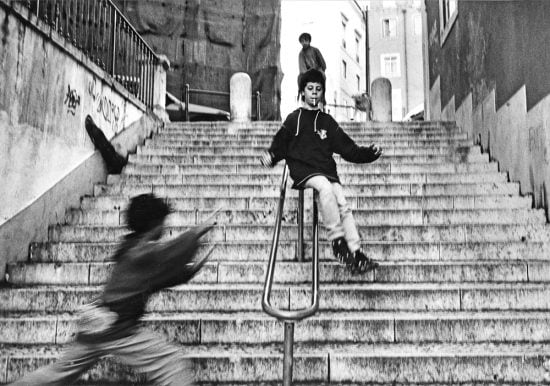The Street Photographers Ideas
Table of Contents3 Simple Techniques For Street PhotographersThe Buzz on Street PhotographersMore About Street PhotographersThe smart Trick of Street Photographers That Nobody is Talking AboutFascination About Street Photographers
A style of digital photography that documents day-to-day life in a public location. The very publicness of the setup makes it possible for the photographer to take candid images of unfamiliar people, often without their expertise. Road professional photographers do not necessarily have a social function in mind, yet they prefer to separate and record moments which might otherwise go unnoticed (Street Photographers).He was influenced by many of those that affected the street professional photographers of the 1950s and '60s, he was not mainly interested in recording the spirit of the street. The impulse to aesthetically document individuals in public began with 19th-century painters such as Edgar Degas, douard Manet, and Henri de Toulouse-Lautrec, that functioned side by side with professional photographers trying to catch the significance of urban life.
Since of the somewhat primitive modern technology available to him and the lengthy direct exposure time required, he battled to capture the stress of the Paris streets. He try out a series of photographic techniques, attempting to find one that would enable him to record motion without a blur, and he found some success with the calotype, patented in 1841 by William Henry Fox Talbot. While the digital photographers' topic was essentially the exact same, the results were noticeably various, showing the influence of the digital photographer's intent on the personality of the pictures he created.
Offered the great quality of his photographs and the breadth of product, architects and artists typically bought Atget's prints to utilize as referral for their very own work, though business rate of interests were hardly his main inspiration. Rather, he was driven to photograph every last remnant of the Paris he enjoyed. The mingled interest and necessity of his goal shine through, resulting in photographs that narrate his very own experience of the city, qualities that prepared for street digital photography of the 20th century.
The Buzz on Street Photographers
They disclose the city with his eyes. His job and fundamental understanding of digital photography as an art kind served as inspiration to generations of photographers that complied with. The future generation of road professional photographers, though they likely did not describe themselves therefore, was introduced by the photojournalism of Hungarian-born photographer Andr Kertsz.
Unlike his peers, Brassa used a larger-format Voigtlnder electronic camera with a longer why not check here direct exposure time, requiring him to be much more computed and thoughtful in his method than he could have been if utilizing a Leica. (It is assumed that he may not have actually been able to manage a Leica during that time, however he did, nevertheless, make use of one in the late 1950s to take colour photographs.) Brassa's pictures of the Paris underworld lit up by synthetic light were a discovery, and the collection of the collection that he published, (1933 ), was a significant success.
Cartier-Bresson was a champ of the Leica camera and one of the first professional photographers to maximize its capacities. The Leica enabled the digital photographer to communicate with the surroundings and to catch minutes as they took place. Its fairly tiny size also assisted the photographer fade right into the history, which was Cartier-Bresson's recommended approach.
The Ultimate Guide To Street Photographers
It is as a result of this fundamental understanding of the art of picture taking that he is commonly attributed with finding the medium around again about a century since its invention. He took photos for even more than a half century and influenced generations of professional photographers to trust their eye and intuition in the moment.
These are the concerns I shall try to respond to: And afterwards I'll leave you with my own interpretation of road digital photography. Yes, we do. Allow's begin with defining what a definition is: According to (Street Photographers) it is: "The act of defining, or of making something definite, unique, or clear"
No, definitely not. The term is both limiting and misdirecting. Sounds like a street digital photography must be pictures of a roads ideal?! And all road digital photographers, other than for a small number of outright beginners, will fully value that a street is he has a good point not the vital element to street digital photography, and really if it's an image of a road with perhaps a couple of uninteresting people doing absolutely nothing of rate of interest, that's not road photography that's a photo of a road.
4 Easy Facts About Street Photographers Described
He makes a legitimate point do not you believe? Nonetheless, while I concur with him I'm not certain "candid public digital photography" will catch on (although I do kind of like the term "honest digital photography") because "street digital photography" has been around for a very long time, with lots of masters' names affixed to it, so I believe the term is below to stay.
You can shoot at the beach, at a celebration, in an alley, in a park, in a piazza, in a cafe, at a gallery or art gallery, in a city station, at an occasion, on a bridge, under a bridge ...
Yes, I'm afraid we have no choice! Without regulations we can not have a meaning, and without a meaning we do not over here have a genre, and without a style we do not have anything to define what we do, and so we are stuck in a "guidelines meaning style" loop!
Street Photographers for Dummies
